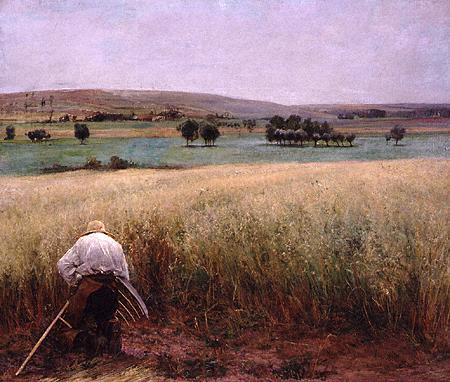When Bernardo Bertolucci and his cinematographer
Vitorio Storaro began preparing The Conformist, Storaro suggested a
visual style that would emphasize bold contrasts between light and
shadow, to reflect the conflicted nature of the film’s protagonist. He
said he thought immediately of the painting above by Caravaggio, with
its strange, not quite naturalistic lighting scheme, and tried whenever
possible to introduce similar hard edges between the dark and light
areas of his images in The Conformist.
In general, Bertolucci’s films draw on effects from painting, especially
from painting that has marked stereometric qualities. Many of the
beautiful compositions involving the urban spaces of Paris in The
Conformist seem to reference the urban landscapes of Caillebotte, an
Impressionist who incorporated the spatial dramatics of academic
painting into his work to a far greater degree than his peers in the
Impressionist movement.
Much of 1900 seems to reference the treatment of pastoral scenes in
19th-Century academic painting.

It’s hard to know how conscious the references to
19th-Century academic painting were for Bertolucci and Storaro, since
this influence had already been absorbed in the visual styles of the
great silent filmmakers like Griffith and Vidor and Murnau, who in turn
clearly influenced Bertolucci. Bertolucci
and Storaro might have tapped into the tradition at any point along the
line of its transmission. But Storaro has made clear his
indebtedness to Caravaggio, and that should lead us logically into an
investigation of other painterly influences on his work, especially his
work for Bertolucci.
I’m not sure how much such an investigation contributes to the experience
of the films, since these sorts of visual strategies and references must
work first on a subliminal level if they are to be genuinely effective,
but it’s certainly fascinating . . . and perhaps of use to other
filmmakers.
